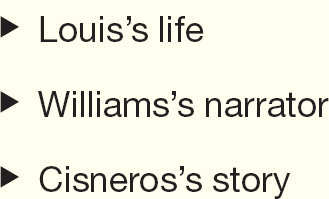Instructor's Notes
LearningCurve activities on using apostrophes are available at the end of the Punctuation section of this handbook.
P7 Apostrophes
Use an apostrophe to mark the possessive form of nouns and some pronouns, the omission of letters or figures, and in some cases, the plural of letters or figures.
P7-
The form of a possessive noun depends on whether it is singular (one item) or plural (two or more items).
Add -’s to a singular noun to show possession.
| a student’s parents | the rabbit’s eye | Ward’s essay |
Be sure to include the apostrophe and to place it before the -s so that the reader does not mistakenly think that the noun is plural.
![]()
Indicate shared or joint possession by adding -’s to the final noun in a list; indicate individual possession by adding -’s to each noun.
![]()
Indicate possession by adding -’s to the last word in a compound.
![]()
Even if a singular noun ends in s, add an apostrophe and -s.

If the second s makes the word hard to pronounce, it is acceptable to add only an apostrophe.
![]()
To make plural nouns possessive, add -’s if the noun does not already end in s, and add only an apostrophe if it does.
![]()
![]()
Note: Form the plural of a family name by adding -s without an apostrophe (the Harrisons); add the apostrophe only to show possession (the Harrisons’ house).
P7-
![]()
![]()
P7-
Some style guides encourage writers to form the plural of a number, a letter, or an abbreviation by adding -’s.
![]()
However, the MLA Handbook (the most commonly used style guide in courses in English literature and composition) does not. So check with your instructor to be sure what is appropriate.
P7-
![]()
The possessive forms of personal pronouns, however, do not have apostrophes: my, mine, your, yours, her, hers, his, its, our, ours, their, theirs.
![]()
P7-
Watch for an apostrophe incorrectly added to a plural noun ending in s when the noun is not a possessive.
![]()